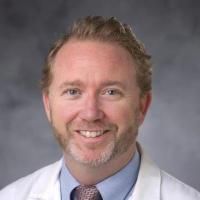Protective astrogenesis from the SVZ niche after injury is controlled by Notch modulator Thbs4.
Date
2013-05
Journal Title
Journal ISSN
Volume Title
Repository Usage Stats
views
downloads
Citation Stats
Attention Stats
Abstract
Postnatal/adult neural stem cells (NSCs) within the rodent subventricular zone (SVZ; also called subependymal zone) generate doublecortin (Dcx)(+) neuroblasts that migrate and integrate into olfactory bulb circuitry. Continuous production of neuroblasts is controlled by the SVZ microenvironmental niche. It is generally thought that enhancing the neurogenic activities of endogenous NSCs may provide needed therapeutic options for disease states and after brain injury. However, SVZ NSCs can also differentiate into astrocytes. It remains unclear whether there are conditions that favour astrogenesis over neurogenesis in the SVZ niche, and whether astrocytes produced there have different properties compared with astrocytes produced elsewhere in the brain. Here we show in mice that SVZ-generated astrocytes express high levels of thrombospondin 4 (Thbs4), a secreted homopentameric glycoprotein, in contrast to cortical astrocytes, which express low levels of Thbs4. We found that localized photothrombotic/ischaemic cortical injury initiates a marked increase in Thbs4(hi) astrocyte production from the postnatal SVZ niche. Tamoxifen-inducible nestin-creER(tm)4 lineage tracing demonstrated that it is these SVZ-generated Thbs4(hi) astrocytes, and not Dcx(+) neuroblasts, that home-in on the injured cortex. This robust post-injury astrogenic response required SVZ Notch activation modulated by Thbs4 via direct Notch1 receptor binding and endocytosis to activate downstream signals, including increased Nfia transcription factor expression important for glia production. Consequently, Thbs4 homozygous knockout mice (Thbs4(KO/KO)) showed severe defects in cortical-injury-induced SVZ astrogenesis, instead producing cells expressing Dcx migrating from SVZ to the injury sites. These alterations in cellular responses resulted in abnormal glial scar formation after injury, and significantly increased microvascular haemorrhage into the brain parenchyma of Thbs4(KO/KO) mice. Taken together, these findings have important implications for post-injury applications of endogenous and transplanted NSCs in the therapeutic setting, as well as disease states where Thbs family members have important roles.
Type
Department
Description
Provenance
Citation
Permalink
Published Version (Please cite this version)
Publication Info
Benner, Eric J, Dominic Luciano, Rebecca Jo, Khadar Abdi, Patricia Paez-Gonzalez, Huaxin Sheng, David S Warner, Chunlei Liu, et al. (2013). Protective astrogenesis from the SVZ niche after injury is controlled by Notch modulator Thbs4. Nature, 497(7449). pp. 369–373. 10.1038/nature12069 Retrieved from https://hdl.handle.net/10161/23279.
This is constructed from limited available data and may be imprecise. To cite this article, please review & use the official citation provided by the journal.
Collections
Scholars@Duke

Eric James Benner
As a neonatologist, my research interests revolve around improving the survival and quality of life of high-risk neonates cared for in Neonatal Intensive Care Units. My primary interest is perinatal brain injuries impacting both full-term infants and those born prematurely. One of the most common forms of perinatal brain injury involves damage to white matter (myelin). My laboratory has developed models of perinatal brain injury to investigate how the endogenous neural stem cell responds to myelin injury. Our hope is to develop innovative strategies to successfully redirect stem cells into the oligodendrocyte lineage and promote myelination after injury. In order to successfully restore myelination after injury, we want to better understand the molecular mechanisms governing 2 important aspects of myelin development.
First, we must understand the molecular signals that drive neural stem cells to differentiate into oligodendrocytes (oligodendrogenesis) and how brain injury impacts this process. This interest has led my laboratory to investigate intracellular and extracellular changes that occur in the neural stem cell niche following injuries that lead to white matter damage.
Secondly, after stem cell commitment to the oligodendrocyte lineage has occurred, we must understand the ongoing signals from the neural environment that influence oligodendrocyte maturation. For this work, my laboratory has developed an innovative technology to remotely control ion channels non-invasively using magnetic fields. Using this technology, we are developing strategies to alter the activity of targeted neural circuits both in utero as well as postnatally to understand the impact of altered activity on myelin maturation. Members of my laboratory are also currently using this technology to understand how altered temperature-gated channel activity in utero may contribute to birth defects associated with maternal fevers.

Huaxin Sheng
We have successfully developed various rodent models of brain and spinal cord injuries in our lab, such as focal cerebral ischemia, global cerebral ischemia, head trauma, subarachnoid hemorrhage, intracerebral hemorrhage, spinal cord ischemia and compression injury. We also established cardiac arrest and hemorrhagic shock models for studying multiple organ dysfunction. Our current studies focus on two projects. One is to examine the efficacy of catalytic antioxidant in treating cerebral ischemia and the other is to examine the efficacy of post-conditioning on outcome of subarachnoid hemorrhage induced cognitive dysfunction.

Cagla Eroglu
Unless otherwise indicated, scholarly articles published by Duke faculty members are made available here with a CC-BY-NC (Creative Commons Attribution Non-Commercial) license, as enabled by the Duke Open Access Policy. If you wish to use the materials in ways not already permitted under CC-BY-NC, please consult the copyright owner. Other materials are made available here through the author’s grant of a non-exclusive license to make their work openly accessible.
